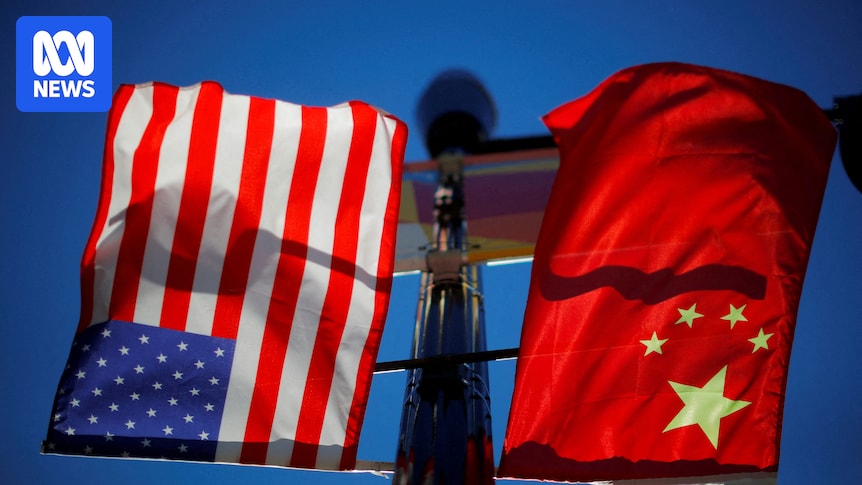34% Tariff: China's Retaliatory US Import Tax – A Deep Dive
Editor’s Note: China has announced a 34% retaliatory tariff on US imports. This article analyzes the implications of this significant trade escalation.
Why This Matters: The Escalating US-China Trade War
The announcement of a 34% tariff on US imports by China marks a significant escalation in the ongoing trade war between the two economic superpowers. This development has far-reaching implications for global markets, businesses, and consumers. Understanding the nuances of this tariff is crucial for anyone involved in international trade or impacted by global economic fluctuations. This article will explore the key aspects of this new tariff, its potential impacts, and what it means for the future of US-China relations. We’ll also examine potential mitigation strategies and the broader context of the ongoing trade dispute.
Key Takeaways
| Point | Description |
|---|---|
| Tariff Percentage | 34% on specified US imports |
| Target Products | Likely to include agricultural products, technology, and manufactured goods. |
| Impact on US Businesses | Potential price increases, reduced competitiveness, and potential job losses. |
| Global Implications | Increased uncertainty in global markets, potential supply chain disruptions. |
| China's Motivation | Retaliation for US tariffs, leverage in trade negotiations. |
34% Tariff: A Detailed Analysis
The 34% tariff represents a significant escalation in the trade conflict. While the exact list of targeted products remains to be fully clarified, it's expected to impact a wide range of US exports. This action is largely seen as a retaliatory measure to previously imposed tariffs by the US.
Key Aspects of the 34% Tariff
- Specificity: The precise list of goods subject to the 34% tariff is crucial. Analyzing this list will reveal the sectors most heavily impacted.
- Timing: The implementation date of the tariff is a key factor influencing its immediate impact on businesses and markets.
- Duration: Whether this tariff is a temporary measure or a long-term policy will significantly impact investment decisions and trade strategies.
Detailed Analysis: Sectoral Impacts
The impact will vary significantly across sectors. Agricultural products, for example, might experience a severe downturn, impacting American farmers. The technology sector could face challenges in exporting high-value goods to China. Manufacturing will likely also feel the strain, potentially leading to job losses or factory closures in affected regions.
Interactive Elements
Impact on US Consumers
The 34% tariff will inevitably affect US consumers. Increased prices on imported goods are likely, reducing purchasing power and potentially impacting consumer confidence. The extent of this impact will depend on the elasticity of demand for the affected goods. Businesses may also absorb some of the costs, impacting their profitability.
China's Strategic Goals
China's imposition of this tariff is a strategic move, demonstrating its willingness to escalate the trade conflict. It is likely intended to pressure the US into renegotiating trade terms and potentially to reduce reliance on US imports. The long-term consequences of this strategy remain uncertain.
People Also Ask (NLP-Friendly Answers)
Q1: What is the 34% tariff?
A: The 34% tariff is a retaliatory import tax imposed by China on specific goods imported from the United States.
Q2: Why is the 34% tariff important?
A: It signifies a major escalation in the US-China trade war, impacting global markets and businesses.
Q3: How can the 34% tariff benefit me? (This question might not be applicable)
A: The tariff is unlikely to directly benefit consumers; it may lead to increased prices for imported goods.
Q4: What are the main challenges with the 34% tariff?
A: Main challenges include increased prices for consumers, reduced competitiveness for US businesses, and potential negative impacts on global trade.
Q5: How to get started with mitigating the impact of the 34% tariff?
A: Businesses should diversify supply chains, explore alternative markets, and engage in proactive lobbying efforts.
Practical Tips for Navigating the 34% Tariff
Introduction: These tips can help businesses and individuals mitigate the negative impacts of the new tariff.
Tips:
- Diversify your supply chains: Reduce reliance on Chinese imports.
- Explore alternative markets: Identify new export destinations.
- Negotiate with suppliers: Seek price concessions or alternative sourcing options.
- Invest in automation: Increase efficiency and reduce reliance on manual labor.
- Lobby your government: Advocate for trade policy changes.
- Monitor market trends: Stay informed about tariff updates and market reactions.
- Consider hedging strategies: Manage financial risk associated with price fluctuations.
- Seek professional advice: Consult with trade lawyers or financial advisors.
Summary: Proactive adaptation is crucial for mitigating the negative consequences of the 34% tariff.
Transition: The next section provides a concise summary of the article.
Summary (Zusammenfassung)
China's 34% tariff represents a significant escalation in the US-China trade war. This article explored the potential impacts on various sectors, including agriculture, technology, and manufacturing, and highlighted the need for businesses to adapt and consumers to brace for potential price increases.
Closing Message (Schlussbotschaft)
The ongoing trade tensions between the US and China underscore the interconnectedness of the global economy. The 34% tariff is a stark reminder of the need for proactive strategies to manage global economic uncertainty. What long-term solutions can mitigate such trade disputes?
Call to Action (CTA)
Stay informed about the latest developments by subscribing to our newsletter for regular updates on global trade and economic news! Share this article to help others understand the implications of this significant event. [Link to Newsletter Signup]
(Note: Hreflang tags would be implemented in the header section of the webpage using appropriate <link> tags based on the specific languages supported.)

